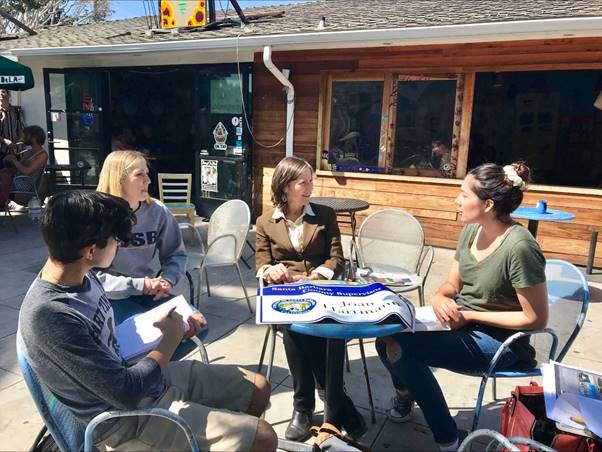At a recent Board of Supervisors meeting, we heard gut-wrenching public testimony from long-term residents caught up in the “renoviction” of four apartment buildings in Isla Vista. Distraught, people with deep roots in the community described how they have nowhere else to go because of exorbitant rents. Who is to blame for this sorry state of affairs? Fingers are pointing at the out-of-state developer, Core Spaces, which is eagerly seeking to profit from California’s lack of student housing, and also at the limited legal protections available to renters caught in a gentrifying area.
I contend that UCSB bears much responsibility. Thirteen years ago, UCSB promised to construct 5,000 student beds and 1,800 faculty and staff housing units, as a condition of the approval of its 2010 Long Range Development Plan (LRDP). UCSB was to have all this additional housing completed either by 2025 or when it reached its 25,000-student enrollment cap, whichever came first. UCSB has already reached — and during some school quarters exceeded — that enrollment cap.
UCSB committed to a build-as-you-grow strategy for housing as student enrollment increased. The Regents accelerated campus enrollment and failed to build the required housing. The university has finished construction on a paltry 1,500 student beds and less than 150 faculty and staff units. The result is that 3,500 students are under-housed and compete with other locals on the South Coast for housing, driving up demand and costs — and leading to the human tragedy we witnessed at the Board where over one thousand people are being pushed out of their homes, and likely the area.
This failure has been a major factor in the South Coast’s excessive rent burdens, overcrowding and extremely low vacancy rates; and it opened the door for avaricious developers like Core Spaces. It is also a primary cause of the exceedingly high number of new units the state is requiring in our mandated Housing Element.
Although the state does not allow student units to be counted toward the South Coast’s Regional Housing Needs Allocation (RHNA), the failure of UCSB to build commensurate with growth means cohorts of students are competing against teachers, nurses, and families for scarce apartment units. This competition has already driven out many Latino families in Isla Vista and the most recent “renoviction” continues the destructive pattern.
The units for faculty and staff do count towards the 4,142 units that the county must assure along the South Coast. UCSB has identified only 730 units for faculty and staff that are being proposed to meet the county RHNA obligation in the next eight years. None of the 730 units will be built and ready for occupancy by the end of the LRDP in 2025. And even when built, the 730 units fall well short of the 1,800 units the University agreed to build by 2025. Where is the accountability?
Had these units been built according to schedule, in sync with enrollment increases, we would not be in the terrible fix we are in. The 1,800 faculty and staff units constitute over 40 percent of the county’s current RHNA requirement for the unincorporated South Coast — accounting for much of the rent burden and overcrowding that has made the county’s RHNA numbers in this cycle so excruciatingly high.
The most concerning issue of the moment is, however, that the RHNA cycle lasts eight years, from 2023 through 2031. During this period, UCSB has committed to building less than half the housing it had agreed to build last cycle and it has made no commitment whatsoever to build the housing needed for its future growth that can be counted towards the County’s RHNA obligation.
In supporting the university’s Growth Plan 13 years ago, the county and the City of Goleta relied on the environmental analysis and Coastal Commission certification incorporating UCSB’s written commitments that these housing units would be built. Since the university has not done so, both the county and the city have filed lawsuits to gain compliance.
The university gained the benefit of its bargain, but left the county, City of Goleta, and most of all, the people suffering for want of affordable housing in the lurch.
Through ongoing negotiations and our lawsuit, the county is determined to ensure that UCSB follows through on all of its long delayed on-campus housing commitments. Still, as we try to wrestle with the factors leading to the heartless renovictions occurring in Isla Vista, let’s not forget a major source of the problem: UCSB.
Joan Hartmann is Santa Barbara County 3rd District Supervisor.

